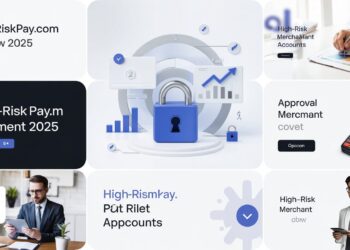In today’s increasingly interconnected business environment, managing third party risk has become an essential aspect of maintaining a strong and secure organization. As companies rely on a growing network of vendors, suppliers, and partners, the need for robust third party risk management (TPRM) solutions has become paramount. By investing in TPRM software, businesses can effectively identify, assess, and mitigate the potential risks associated with their external relationships. This blog post will comprehensively describe the ROI that businesses can achieve by investing in third party risk management software.
Understanding Third Party Risk Management Software
TPRM software is designed to help businesses systematically manage risks associated with their third party relationships, including vendors, suppliers, and partners. By implementing a TPRM tool, organizations can gain a comprehensive view of their third party ecosystem, enabling them to proactively identify and manage potential risks before they escalate. This, in turn, leads to increased efficiency, enhanced risk mitigation, and ultimately, a higher return on investment.
Key Features and Functionalities
A TPRM tool typically offers several key features to help businesses effectively manage third party risk. These functionalities include:
- Assessment and tracking of third party risk – The software enables organizations to identify and assess the risks associated with each third party relationship, providing a clear view of potential vulnerabilities.
- Automation and integration capabilities – Many TPRM software solutions can be seamlessly integrated with existing systems and processes, allowing for the automation of routine tasks and increased efficiency.
- Reporting and analytics tools – Third party risk management software often includes advanced reporting and analytics capabilities, enabling businesses to track risk metrics, identify trends, and make informed decisions based on real-time data.
Factors Influencing ROI in Third Party Risk Management Software
Software Implementation Costs
When considering the ROI of a TPRM tool, it’s important to account for the costs associated with its implementation. These costs can include initial setup and integration expenses, as well as subscription and licensing fees. Additionally, training and onboarding expenses for staff members who will be using the software must also be taken into account. A higher initial investment may be offset by greater long-term returns, making it essential for businesses to carefully consider their specific needs and budget.
Time Savings and Efficiency
One of the primary benefits of investing in third party risk management software is the significant time savings and increased efficiency that can be achieved. With automated risk assessment processes and reduced manual workload, businesses can redirect resources toward more strategic initiatives. This, in turn, can lead to faster decision-making and greater agility in responding to potential risks.
Enhanced Risk Mitigation
An effective TPRM tool can help businesses improve their risk identification and assessment capabilities, ultimately leading to more proactive risk management strategies. By reducing the likelihood of financial and reputational damage stemming from third party relationships, businesses can enjoy a higher return on their software investment.
Quantifying ROI of Third Party Risk Management Software
Assessing Direct Financial Benefits
When evaluating the ROI of a TPRM tool, it’s crucial to consider the direct financial benefits that can be realized. These may include cost savings resulting from reduced risk events, increased revenue from optimized vendor relationships, and lowered compliance and legal expenses. Through the assessment of these benefits, businesses can gain a clearer understanding of the financial impact of their software investment.
Evaluating Indirect Financial Benefits
In addition to direct financial benefits, third party risk management software can also provide indirect financial benefits. These may include enhanced brand reputation and trust, increased operational efficiency, and streamlined vendor and contract management processes. While these benefits may not be as easily quantifiable as direct financial gains, they still contribute significantly to the overall ROI of the TPRM tool.
Calculating ROI Metrics
To calculate the ROI of third party risk management software, businesses can use the following formula:
ROI = (Net Benefits / Total Investment) * 100
Net benefits can be determined by subtracting the total investment (implementation costs) from the sum of direct and indirect financial benefits. By considering both the direct and indirect benefits, businesses can obtain a more comprehensive understanding of their software investment’s return. It’s important to note that the timeframe for ROI realization can vary depending on the specific software, implementation process, and the organization’s unique circumstances.
Real-world Success Stories and Case Studies
Industry-specific Examples
To illustrate the potential ROI of third party risk management software, let’s examine some industry-specific examples:
- Financial services – A large financial institution implemented a TPRM tool to automate risk assessments and streamline vendor management processes. As a result, the organization reduced risk-related incidents by 30% and experienced a 25% increase in efficiency, leading to substantial cost savings and revenue growth.
- Healthcare – A healthcare provider utilized vendor risk management software to improve risk identification and mitigation efforts. By proactively managing risks, the organization reduced the occurrence of data breaches and HIPAA violations, resulting in lower compliance costs and a stronger reputation within the industry.
- Manufacturing – A manufacturing company invested in a TPRM solution to optimize supplier risk management. The software enabled the company to identify high-risk suppliers and implement corrective actions, leading to a reduction in supply chain disruptions and improved product quality.
Demonstrated ROI outcomes
These real-world examples showcase how businesses across various industries have achieved significant ROI through their investment in third party risk management software. By implementing effective risk management strategies, companies have been able to reduce risk-related incidents, optimize vendor relationships, and ultimately, increase their bottom line.
Investing in third party risk management software can yield substantial returns for businesses across various industries. With due consideration of both the direct and indirect financial benefits, as well as the factors influencing ROI, organizations can make informed decisions about their TPRM tool investment. Through the strategic implementation of these solutions, businesses can strengthen their risk management efforts, streamline processes, and ultimately, maximize their return on investment.





